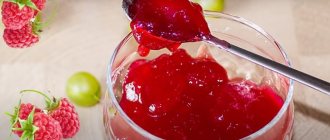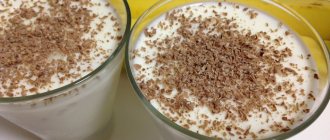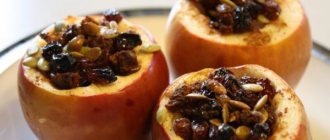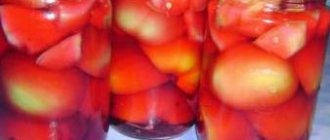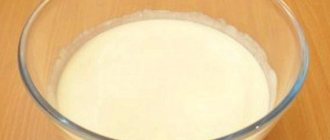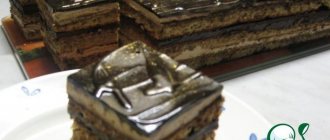My godfather San Sanych came to visit me one day. He did not name the specific purpose of the visit. We whiled away the time discussing completely different topics: from the structure of the universe to the problems of drinking water and the number of ground squirrels in South Africa.
Quite by chance, the conversation touched on our favorite topic of experimenting with alcohol, or “handmade”, as we call it. We came to the conclusion that it would be a good idea to make homemade wine from the autumn grape harvest.
Do you grow grapes that do not have outstanding taste? You have an unprecedented grape harvest, and you don’t know what to do with so many berries? From it you can make wine with a rich taste, aroma and color, which will prevent the raw material from going to waste.
It was not for nothing that the ancient Greeks revered the god of wine, Dionysus. According to ancient legends, it was he who taught people how to prepare a simple and at the same time such an exquisite drink.
The story of my subscriber Nikolai.
Grape honey
Few of us have tried grape honey - it is a boiled syrup called bekmes. It turns out that such a delicacy can be prepared with your own hands. Do not confuse it with jam; the consistency of bekmes is viscous, like honey, vaguely reminiscent of eastern churchkhela.
So, let's start preparing the dessert:
- Prepare the grapes and pat dry slightly with paper towels.
- Pour some water into the bottom of the pan, place the crushed berries there and cook over low heat until softened.
- After cooling slightly, the resulting mass must be rubbed through a sieve to obtain a uniform consistency.
- Then boil the jam in a water bath so that the water evaporates.
The grape honey is ready, all that remains is to put it in jars and serve it to your guests.
Drink with berry sourdough
An interesting recipe suggests making homemade wine from grapes and other berries, such as raspberries or currants. If their season is already over, then you can use their cake, which was prudently stored in the refrigerator, as a starting material. For grape and berry wine take:
- 10 kg of grapes;
- 2.5 kg sugar;
- 10 liters of water;
- 200 g each of raspberries and currants.
Preparation.
For grape wine to ripen, it needs at least a couple more months. In general, the longer this low-alcohol drink sits, the tastier and better it becomes.
Grape jam
This delicacy is especially popular in the south of our country, where there is always an abundance of grapes. In addition to its excellent taste and aroma, it is very beneficial for the body.
Sugar, cinnamon or citric acid acts as a preservative.
We will need:
- grapes of any variety - 1 kg;
- granulated sugar - 1.2 kg;
- water - 1 glass;
- vanillin - a pinch.
Recipe:
- Wash the grape bunches thoroughly, then separate the berries from the branches and place in a deep bowl.
- Place the grapes in a colander and blanch for a couple of minutes in hot water, then immediately plunge into cold water.
- Place blanched grapes in a saucepan.
- Pour the prepared hot syrup over the berries and leave for about 10 hours.
- Drain the syrup into a separate container, boil and pour over the berries for another 10 hours.
- Place the resulting mass on the stove and bring to a boil. Then cook over low heat for 30 minutes.
- After cooling completely, pour the jam into dry, clean jars and close the lids.
Collection and preparation of grape berries
You can make grape wine from almost any grape. But the most successful drink is obtained from special wine varieties such as Isabella, Lydia, Moldova, etc. The taste and specific aroma of this grape cannot be confused with other varieties, and the homemade wine turns out to be especially tasty with a piquant, slightly tart note. It is not recommended to wash berries used for making wine. You just need to pick them from the branch, remove the rotten and unripe ones, and then wipe them well with a cloth. The fact is that special bacteria live on the skin of all fruits, ensuring natural fermentation.
It is best to harvest grapes in clear sunny weather, at least 2-3 days after rain. It is recommended to use them on the same day, or in extreme cases, no later than 2–3 days after collection. Regardless of the main recipe, you need to select only fully ripe berries, without rot or damage. Any dents, and especially rotten areas, are unlikely to make homemade wine more tasty.
It doesn’t matter whether you make grape wine from juice or with the addition of water, the berries must be well crushed. To do this, you can use a regular masher, meat grinder, blender or juicer. Experienced winemakers generally prefer to do this with their hands, and for large volumes even with their feet. Some recipes involve slightly heating the grapes over a fire (up to 75°), which promotes a more active release of juice. Even the pulp that remains after canning grape juice can be used as a base for grape wine. You just need to fill it with water in the correct proportion.
Pickled grapes
The taste of pickled grapes will appeal to gourmets and all lovers of spicy foods. Such a treat on the table will definitely attract the attention of guests and you will definitely want to taste it. We offer a recipe for pickled grapes that you will definitely like. Any variety is suitable for it, except Isabella and Lydia.
List of ingredients for the preparation, designed for a 0.5 liter jar:
- grapes - 300 grams;
- water - glass;
- salt - half a teaspoon;
- vinegar 9% - 1 tablespoon;
- peppercorns - 10 pieces;
- garlic - 3-4 cloves.
Your actions:
- Remove the grapes from the bunches, rinse in water and place in a deep container. It is recommended to take sweeter berries. If the variety is sour, add more sugar to the marinade.
- Place clean berries in sterilized jars to the very top and pour boiling water for 5 minutes.
- Drain the liquid from the jar of grapes into a separate pan, add a little water, salt and boil.
- Place the peeled garlic in jars, along with black pepper, vinegar and lids.
- Turn the workpiece over, wrap it up and leave to cool.
If desired, you can add mustard seeds; they will add a refined taste to the marinade.
Cooking process
Now we have crept up to the most interesting moment - the manufacturing process.
Our grapes are ripe. In the middle zone this usually happens in early October. In other varieties and in other climatic zones, ripening may be earlier, but a prerequisite is that the grapes must be ripe. It is in ripe grapes that the concentration of yeast on the bunches is maximum.
Attention! If you collect berries in the fall, it is important to prevent frost from “grabbing” our future raw materials, since some of the yeast may die from low temperatures, which will inevitably delay the fermentation process.
After harvesting grapes, under no circumstances should they be washed. It is necessary to clear the bunches of tassels, thereby the berries will begin to release juice. Peeled berries should be crushed and poured into a plastic or enamel bowl of a suitable size. Here you can add sugar diluted in boiled water. The proportions are as follows:
- 4-7 kg of grapes;
- 10 liters of water;
- 4 kg sugar.
Everything needs to be mixed and left in a warm place.
There are options for crushing the berries along with the tassels, since yeast fungi are also present on them, but personally I don’t do this: there should be enough yeast for the berries picked in time.
After about a month or two (the classic period is 40 days), the seeds should be completely separated from the fruit. At this stage, we need to strain our future wine, removing the seeds and skins of the grapes.
You can use regular 3 liter jars
Gauze is ideal for this. The straining process is very important, because without it it will be difficult to obtain a pure drink without suspensions. The filtered mixture is poured into glass containers, better known as “bottles”.
Next we need to make a “wine performance indicator”. Behind this scientific name lies an ordinary medical glove with a hole, stretched over the neck of a “bottle.”
Yeast, in the process of its life processes, converts sugars into alcohol, releasing carbon dioxide. Carbon dioxide tries to escape from the dish, meeting the glove on its way. Thus, it inflates.
When the fermentation process ends, carbon dioxide ceases to be released. The glove deflates, signaling us that it’s time to move on to the next stage - separating the wine from the sediment.
For the same purposes, you can use a tail lift - a small tube coming out of the lid and lowered into a small container of water - by the bubbles from which you can determine whether the fermentation process is in progress. But using a glove is somehow more practical and there’s no need to be fancy.
Draining is best done using a hose from a dripper. A bottle of spent wine cannot be lifted and simply poured through the neck, as sediment will rise and we will end up with a cloudy slurry, and the nectar will flow down the dropper hose without taking anything extra with it.
If everything is done correctly, then in the spring you will be able to take samples from freshly prepared wine.
Grape jelly
To make grape jelly, you can use any grape variety; the Isabella variety is ideal. Depending on the sweetness of the berries, change the amount of sugar added to your taste.
We will need:
- grape juice - 1 liter;
- wheat flour - 100-150 grams;
- sugar - 600 grams.
Cooking method:
- Heat the pan with the prepared juice over low heat and, stirring constantly, bring to a boil. If foam forms during cooking, it must be skimmed off periodically.
- Cook the jelly over low heat for about 40 minutes.
- After the time has passed, add the sifted flour to the juice and stir so that no lumps form.
- Cook for another 10 minutes until the mixture thickens.
- Pour the grape jelly into molds and leave until completely cool.
Dessert can be served at the table. If the workpiece is intended for storage, place the jelly in sterilized jars and close tightly.
Lots of grapes, what to do. Vinegar
Grape pomace and spoiled berries are suitable for making vinegar.
- pulp;
- filtered water;
- sugar .
- Fill the glass container 2/3 with pulp and add water at the rate: for 800 grams of pulp 1 liter of water;
- We put 100 grams of sugar for each liter;
- We wrap the neck of the jar with gauze and leave it in a dark, warm room with a temperature of 25-29 degrees for two weeks;
- To speed up the fermentation process, stir the juice every day with a wooden spoon to saturate it with oxygen;
- After fermentation, the juice must be strained. To do this, put it in cheesecloth and squeeze it out;
- Strain the resulting liquid again, pour it into a glass bottle and add sugar - 100 grams per 1 liter of liquid;
- We wrap the neck of the jar with gauze and set it for final fermentation. Fermentation can take from one and a half to two months;
- Then fermentation stops and the liquid becomes light;
- Strain the vinegar and bottle it for preservation.
Grapes are a source of many beneficial substances and vitamins. By preparing grapes for the winter, you can provide yourself with an additional source of vitamins.
A generous, plentiful harvest is always a joy for a good owner. But this is why he is a good owner: nothing should be lost or spoiled from what was grown and collected in his garden. Winegrowers know how abundant the ripening of sunny grapes can be. The grapes are used to make wonderful wine, which brings back summer with its aroma and taste. But what to do if all possible wines have already been prepared, but there are still a lot of homemade grapes? There is no time to think about this issue for a long time in such a hot time; we must act. You can make a lot of different and tasty things from grapes, for example, the Isabella variety. Now let's take a closer look.
The simplest recipes with photos of baking with grapes
These may well include the stories given above. We repeat: everyone can make cottage cheese berry and shortbread pies, even inexperienced housewives.
The easiest way to make this pizza is with puff pastry and grapes.
Layer pie with grapes
Ingredients:
- puff pastry (yeast-free) – 450 g;
- blue and green grapes (seedless) – 300 g;
- cinnamon – 1 tsp;
- sugar – 3 tsp.
Preparation
- Thaw the finished dough according to the instructions on the package. Cut into two parts or cut out a circle, attaching a flat plate. The baking shape can be rectangular or round.
- Wash the Isabella grapes and sultanas, dry them in a colander, separating the berries from the branches.
- Moisten a baking sheet with water or grease with vegetable oil. Place the prepared pies onto it. Brush each with sweet water (50 ml water, 2 tsp sugar). Arrange the grapes, slightly pressing them into the dough.
- Sprinkle with cinnamon and sugar.
- Place in an oven preheated to 200 degrees for 20-25 minutes. Be guided by the color of the pies. When they turn golden brown, it’s time to take them out and cut them into portions. An unpretentious recipe with a beautiful photo of a simple pie will ensure culinary success. Baking with grapes is surprisingly aromatic and appetizing.
How to cook cupcakes, muffins with grapes - recipes with photos of quick baking with grapes
We take as a basis the first two recipes from the first section “The most beautiful...”
and form cottage cheese muffins or shortbread tartlets. These are miniature pies.
Technology
- Grease the molds with vegetable oil.
- We distribute cottage cheese or shortbread dough over each one so that we get sides.
- Pour in the filling: curd filling or grape puree with starch.
- We put grapes in the cottage cheese filling.
- Bake for 25-30 minutes at 200 degrees.
What to cook from sour grapes. Homemade sour grape wine
The acidity of grapes is one of its most important characteristics. Wine berries contain the most tartaric and malic acid, and only about 10% is allocated to the other thirty-three acids in their composition. Tartaric acid is softer and therefore valuable for winemaking. While malic acid is more active and aggressive, it is only found in white varieties. When it's warm and sunny, malic acid breaks down quickly.
Grapes can be sour for two reasons: either they are not ripe, or the sour taste is due to the high content of acids relative to sugars in the ripe berry. The second case can be observed in varieties cultivated in colder regions, since it is in cool climates that malic acid breaks down less and more slowly.
If the grapes are ripe but sour, they will make an excellent homemade wine, the main thing is to reduce excess acidity. How and how to do this, the entire technology of the process, calculations and a recipe for delicious wine from sour grapes we have outlined for you in this article.
How to reduce acid content in wine must
For winemaking, there are optimal values for the acidity of wine; they range from six to ten grams per liter of must (pH 6-10 g/l). If the acid balance is higher than pH≥12 g/l, then the wine will be too sour.
The easiest way is to add water and sugar to grape juice. Water reduces the concentration of acids by half. A kilogram of sugar increases the volume of the wort by 0.6 liters and further reduces the acidity. All calculations are carried out on the basis of data from tabular values or measurements with special devices. (Acidity is measured with a pH meter, sugar content with a saccharometer, etc.)
Calculation of adding water and sugar to grape must with an acidity of 18 g/l and a sugar content of 8% to obtain wine with an alcohol content of 12% according to the actions:
- For 1 liter of grape must with a pH of 18 g/l + 2 liters of water = 3 liters of wine material.
- To make a wine with a strength of 12%, it must contain 200 grams of sugar per 1 liter of wine material: 3 * 200 = 600 (grams) of sugar.
- Since the sugar in the original wort is 8%, this is 80 grams that are already there. So you need to add: 600-80=520(g)=0.52(kg)
- Since 1 kg of sugar = 0.6 liters of volume, then 0.52 * 0.6 = 0.312 (l) is the volume that already exists.
- 2 liters of water that was planned to be added - 0.312 liters, which have already been obtained after adding sugar = 1.688 (liters) of water that needs to be added to the wort.
- Total: add 520 grams of sugar and 1.688 grams of water to one liter of wort.
Sour grape wine recipe
- Take 10 kilograms of grapes. Sort out the grapes. Remove all ridges, affected and completely green berries from them.
- Squeeze the juice out of the berries by hand or in another way that does not violate the integrity of the seeds.
- Add water to the resulting pulp at a ratio of 1:1 by volume.
- Add 2 kilograms of sugar there and mix everything well.
- Next, place the starter in a warm place where it will begin to ferment. At a temperature of 18-24 degrees the process will take 3-4 days.
- Stir the pulp that has begun to ferment daily, morning and evening.
- When, on the last day, the head of yeast and cake rises by about a third of the original pulp volume, this means that the wine material is ready and needs to be separated from the cake and seeds.
- The “cap” no longer needs to be mixed with the wort, but must be removed into a separate container to drain the wine material.
- You need to squeeze out the cake, strain all the juice and add another 1 kilogram of sugar to it. Mix the entire mixture well and place it in another container in which vigorous fermentation will continue.
- It is better if it is a large bottle with a narrow neck, on which you need to install a water seal or a medical glove.
- After 4 weeks, the violent fermentation of the wort will end and sediment will form in the bottle with alcoholic liquid.
- At this time, you need to remove the drink from the sediment using a hose, pour it into another container and, if necessary, add another portion of sugar to taste.
- Close the wine tightly and place it in a cold place (refrigerator, cellar, where the temperature is from 4, but not higher than 10 degrees), after 2-4 weeks, remove it from the sediment again.
- Pour homemade alcohol into sterilized containers and seal for further storage.
